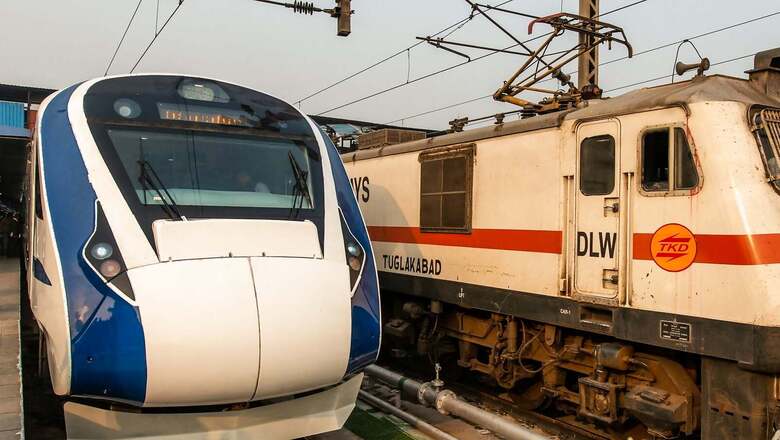
views
In a first-of-its-kind verdict in September last year, the Supreme Court ordered Indian Railways to pay compensation of Rs 30,000 to a passenger who missed a Jammu-Srinagar flight because a train (Ajmer-Jammu Express) reached its destination four hours late. However, Indian Railways and delays have been abreast for decades now.
According to a CAG (Comptroller and Auditor General) report, Rs 2.5 lakh crore has been invested in the infrastructure of the Indian Railways between 2008 and 2019. But, despite this huge investment, the punctuality of trains has seen an insignificant increase. As per the audit, only 0.18 percent improvement has been noted in punctuality. 2017-18 has been the worst performing year in terms of punctuality for the Indian Railways where 30 percent of all trains ran late.
Will Faster Trains Solve The Problem?
The government launched an initiative called “Mission Raftaar” in 2016 which aimed at increasing the average speed of freight trains and Mail//Express trains by 2021-22. The CAG audit, as reported by Times of India, noted that the speed of the trains are yet to be increased.
The Indian Railways has, however, introduced the Vande Bharat Express that are capable of running at speeds of 160-180 kmph. As per the data charted out by TOI, Vande Bharat has been able to maintain a healthy punctuality rate but speed is not the only contributing factor. There is also less halt time at the stations, minimal turnaround time, and faster acceleration and deceleration that contributes to Vande Bharat’s punctuality.
How Does Infrastructure Play Its Role?
Infrastructure also plays a key role in the punctuality of trains. Factors like train traffic, new lines, doubling, track gauges, among other things contribute to how smooth the railway network runs. The infrastructure also plays its role in decongesting traffic nodes. CAG also noted how train delays are also triggered due to stations running out of space for trains.
The CAG report noted that factors like path, engineering, block & signal, and telecommunication contribute to 51 percent of the train’s punctuality. The report suggested that reducing the congestion on tracks can greatly influence trains running on time.
What Can Be Learnt From Railways In Other Countries?
The report noted that India has too high a threshold for measuring punctuality. While India’s punctuality yardstick stands at 15 minutes, other countries have a much lesser threshold. Japan, for instance, has a threshold of a few seconds. Netherlands’ punctuality yardstick is at 3 minutes.
Countries like China have developed dedicated high-speed lines that are separate from the regular network of railways. These high-speed railway lines have great reliability and a good record of punctuality.
Many technology-based solutions are also in use in various parts of the world. CAG report also suggests the use of computerised timetabling and grouping of trains to improve punctuality.
Read all the Latest News and Breaking News here



















Comments
0 comment